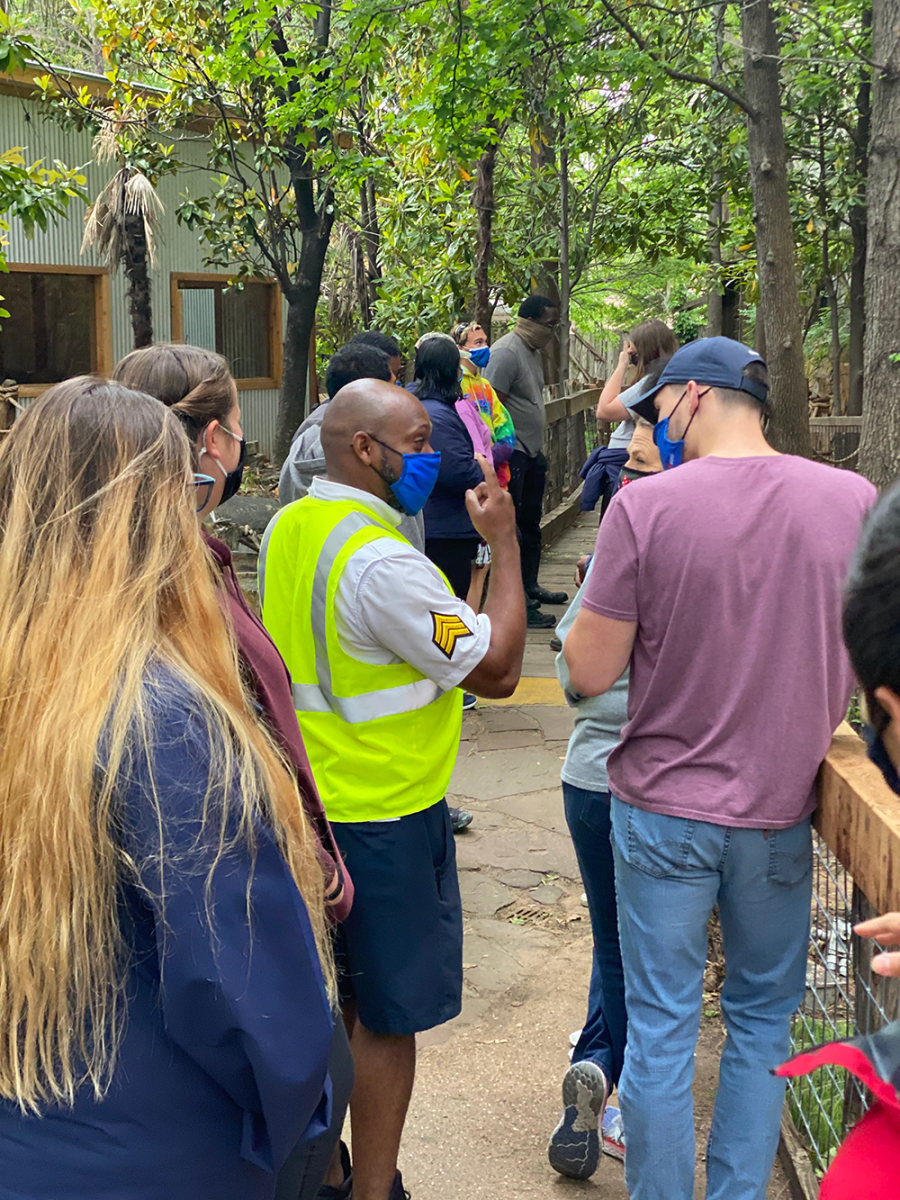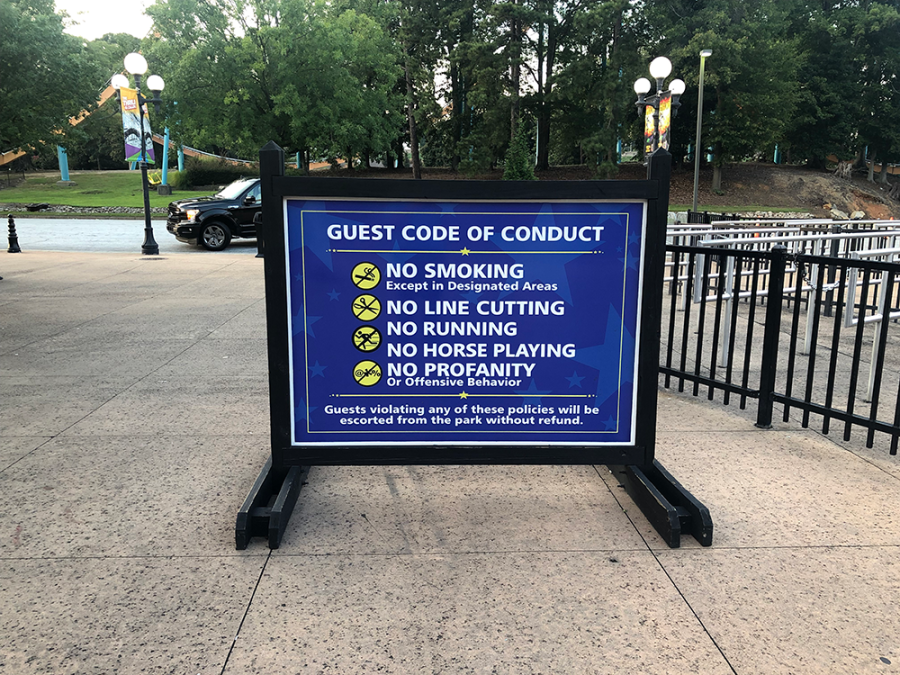How Attractions can Establish Effective Safety and Security Messaging

Today more than ever, effective safety and security messaging is a must for amusement parks and attractions. Operators need to ensure that everything, from facility safety rules to emergency security alerts, is being clearly communicated to guests at all times. In return, guests need to be aware of safety and security policies and procedures, as well as understand that their safety is the No. 1 priority at attractions. The care and attention that operators devote to safety and security messaging can push these values to the forefront.
Nonverbal Safety and Security Messaging
At Six Flags’ 27 theme parks across the United States, Mexico, and Canada, guests receive nonverbal safety and security messaging cues as soon as they arrive on property. This messaging lets them know that Six Flags is looking out for their safety and has security measures in place to catch anyone who might threaten it.
“As guests come in through the parking lot, they’ll see our camera systems that are out in full view,” says Jason Freeman, Six Flags’ corporate vice president of security, safety, health, and environmental. “They’ll see security folks and CCTV (closed-circuit TV) camera towers as they arrive for their day. And then as they get through the front gate, they’ll pass through state-of-the-art weapons detection systems that ensure their safety and security while on the property.”
Wherever guests may be in a Six Flags park, they are always within reach of its safety and security messaging system.
“We can communicate with our guests through the standard public address system speakers,” Freeman says. “Each of our camera units also has the ability to deliver audio messages throughout the entire park, in a specific section, or individually via a tower that an individual camera is mounted on. Using these channels, we can talk to guests directly and educate them about any safety or security issues in real time.” Six Flags’ informational safety and security audio messaging is bolstered by signage on its properties and messages on its websites.
If an emergency were to arise that requires guests to evacuate a Six Flags park, this information is communicated through the loudspeaker and camera system, as well as in person by staff members.
“Our staff is trained on how to close the park,” Freeman tells Funworld. “If this has to be done, we alert them using their two-way radios and smartphones. They then inform guests on what they need to do to exit safely. To aid them in this process, Six Flags can also broadcast automated prerecorded audio messages that broadcast through our loudspeakers and cameras.”
Communicating to Be Heard
Helping amusement park and attractions operators optimize their safety and security messaging is a top priority for the IAAPA Global Safety Committee.
According to the committee, the optimization process begins with the formulation of clear, understandable safety and security rules. Once de-vised, employees receive training in these rules, along with instruction in how to appropriately communicate them to guests.
The goal of these communication methods is to relate information in simple, straightforward, and courteous ways so guests feel reassured, respected, and motivated to comply. This positive approach tends to be more successful than just ordering guests to “do as they’re told.” It has proven to be particularly helpful during the last two years of adjusting to COVID-19.

A Range of Communication Options
In addition to loudspeakers, surveillance cameras, and eye-catching signage at rides and other high-traffic locations, there are many ways for attractions to communicate safety and security messaging to their guests.
Interactive smartphone apps, which guests refer to during their visits, can be excellent contact points for sharing safety and security information. Messages on these apps can be general to the entire venue or specific to guests’ actual locations, as indicated by their smartphones’ GPS location data.
During emergencies, evacuation directions can be pushed directly to these apps. The same directions can also be sent to guest smartphones by text/SMS, email, and phone calls. These directions can be posted on official social media pages, as well. During nonemergency times, these same channels can be employed to explain rules about park policies, including proper attire, behavior, and prohibited items on the property.
Digital signage, such as weatherproofed HDTV displays showing messages from the facility, can also play a big role in keeping guests informed. When it comes to safety and security rules, these screens can tell guests what the rules are in attention-grabbing videos. When a park evacuation or direction of guests to protected indoor spaces is required, prerecorded videos can provide this information using graphics, voice, and text messages.
Lastly, printed paper maps and brochures can convey all of this information to guests, in addition to the locations or operating hours of rides, restaurants, and restrooms on the property. Even in the 21st century, printed paper remains popular with the public and useful for informing about safety and security policies and procedures.
More Channels are Better Than One
When it comes to safety and security messaging, the IAAPA Global Safety Committee says that all methods play a role in reaching guests reliably. This is why effective communication to guests and employees cannot be boiled down to a singular approach. Safety and security messaging needs to be delivered over multiple channels to ensure that one point of failure doesn’t stop dissemination of communications. As a result, the committee recommends that amusement parks and attractions use digital and fixed signage, loudspeakers, radios, phones, and word-of-mouth to keep guests in-formed.
Additionally, elements of interactivity can allow guests to report problems and possible threats by phone, text, or email. When interactivity is supported, guests’ ears and eyes become a force multiplier for the property’s safety and security personnel.
The bottom line is this: Effective safety and security messaging across multiple channels, backed by properly trained staff, maximizes guest safety at attractions. This level of protection helps guests feel safer; therefore, they can enjoy themselves more freely and are more likely to visit the facility again.
- James Careless is a Canada-based writer who covers the water park industry for Funworld.
